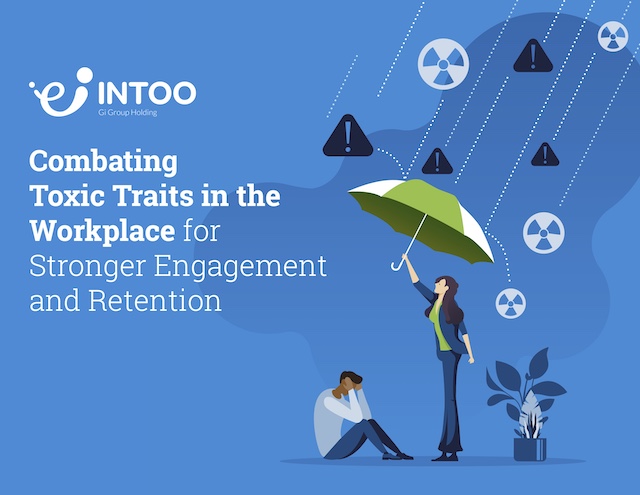Evaluating and tracking employee performance is a fundamental component of effective team management. It serves several critical purposes, enhancing a workforce’s overall productivity and success. Performance evaluations allow managers to pinpoint areas requiring improvement in an employee’s work, which is essential for both individual and team development. By identifying these areas, employers can provide targeted support and resources to help employees grow in their roles. Additionally, evaluating and tracking performance ensures that employees continually develop their skills and knowledge, which is vital in today’s ever-evolving business landscape. It also highlights opportunities for additional training or coaching, even when an employee is performing well, thus enabling ongoing growth and adaptability within the organization. In this guide, we will delve into practical methods for evaluating and tracking employee performance while emphasizing the importance of recognizing when further development is needed to maintain a high-performing workforce.
Why Is It Important to Evaluate Employee Performance?
1. To align individual goals with organizational objectives
Performance evaluations help ensure that employees’ efforts align with the company’s overall goals and objectives. By assessing individual contributions, organizations can identify areas where employees either excel or may need additional support or training to better align with the company’s direction.
2. To promote employee engagement and motivation
Effective performance evaluations provide employees with valuable feedback on their work, highlighting their strengths and areas for improvement. This feedback can boost employee morale, cultivate a sense of accomplishment, and inspire further development and growth.
3. To identify training and development needs
Performance evaluations can reveal areas where employees may need additional training or development opportunities. By recognizing skill gaps or areas where knowledge could be enhanced, organizations can invest in their employees’ growth, leading to increased productivity and improved retention.
4. To make informed decisions about promotions, compensation, and recognition
Performance evaluations provide objective data that can inform decisions about promotions, compensation adjustments, and employee recognition programs. By understanding each employee’s contributions, organizations can reward high performers and incentivize continued excellence.
5. To enhance communication and transparency
Performance evaluations foster open communication between managers and employees, allowing for constructive discussions about expectations, goals, and areas for improvement. This transparency builds trust and strengthens the employee-manager relationship.
What Are the Benefits of Tracking Employee Performance?
Tracking employee performance offers several benefits to both employees and employers. Here are some of the key advantages:
1. Improved productivity
Tracking employee performance helps to identify areas where employees excel and where they may need improvement. This information allows employers to provide necessary support and resources for employee development. When employees are better equipped and motivated to perform well, they can contribute more effectively to their roles, leading to increased productivity and a higher-quality product. In other words, by addressing weaknesses and building on strengths, overall work output can be enhanced.
2. Objective assessment
Performance tracking offers an objective and data-driven way to evaluate employee contributions. This is in contrast to subjective judgments, which can be influenced by personal biases or favoritism. Objective assessments are based on measurable data such as completed tasks, project outcomes, or specific metrics, making the evaluation process fairer and more transparent.
3. Feedback and development
Regular performance assessments provide employees with valuable feedback on their work. Giving your employees constructive feedback helps them understand their strengths and weaknesses, enabling them to focus on personal and professional development. Employees who are aware of their performance can take proactive steps to improve their skills and better contribute to their teams and organizations.
4. Goal alignment
Performance tracking ensures that employees’ efforts are aligned with the company’s goals and objectives. When employees understand how their work contributes to the overall success of the organization, they are more likely to be engaged and motivated. They can see the direct impact of their efforts on the company’s mission, which can lead to increased commitment and enthusiasm in their work.
 5. Incentive and recognition
5. Incentive and recognition
A performance tracking system allows organizations to identify high-performing employees and reward them accordingly. Recognition can come in various forms, such as monetary bonuses, promotions, or other incentives. Recognizing and rewarding top performers not only motivates them to excel further but also sets an example for other employees, encouraging them to strive for excellence.
6. Identifying training needs
Through performance tracking, employers can identify areas where employees may need additional training or support. This data-driven approach helps organizations tailor training programs to address specific knowledge deficiencies and skill gaps. By providing targeted training, employees can enhance their capabilities, which, in turn, benefits the company as a whole.
7. Resource allocation
Performance tracking enables organizations to allocate resources effectively. By identifying high-performing projects or departments and those that may need additional support or resources, organizations can make informed decisions about resource allocation. This ensures that resources are directed where they can have the most significant impact, optimizing the use of time, money, and personnel.
8 Ways to Evaluate Employee Performance
1. Set baselines and performance standards
Establish clear performance expectations and standards for each role within the organization. These standards should outline job responsibilities, targets, and key performance indicators (KPIs). By defining success, you create a foundation for evaluating employee performance. Regularly assess whether employees meet, exceed, or fall short of these standards.
2. Track completion of tasks and goals
One of the most fundamental ways to evaluate employee performance is by assessing how efficiently they complete their assigned tasks and achieve their goals. This includes the quality, quantity, and timeliness of their work. Consider factors like meeting deadlines, project completion, and task execution with minimal errors.
3. Assess communication skills
Assess an employee’s ability to collaborate with colleagues and demonstrate leadership skills. Effective teamwork and leadership play a crucial role in achieving organizational objectives. Evaluate an employee’s communication skills, willingness to help others, and ability to resolve team conflicts.
4. Monitor attendance and punctuality
Reliable attendance and punctuality are vital performance indicators. Consistently arriving on time and adhering to the work schedule demonstrate a strong work ethic and commitment. Frequent absences, tardiness, or a pattern of unexcused leaves can negatively impact both individual and team performance.
5. Review quality of work
Evaluate the quality of an employee’s work, which goes beyond completing tasks. Consider accuracy, attention to detail, and the ability to meet or exceed quality standards. Reviewing the final product or service provided can help gauge the employee’s effectiveness and contribution to the organization.
6. Give feedback and performance appraisals
Regular feedback sessions and appraisals are invaluable for evaluating employee performance. These formal reviews provide a platform for discussing achievements, identifying improvement areas, and setting future goals. A two-way dialogue in these sessions ensures that employees understand their strengths and weaknesses and can actively participate in their own development.
7. Define key performance indicators (KPIs) and metrics
Specific KPIs and metrics are available to assess performance in many roles. For sales teams, it could be sales revenue or conversion rates. For customer service, it may involve response times and customer satisfaction scores. Analyzing these metrics provides quantifiable data on an employee’s contributions and helps make objective evaluations.
8. Encourage self-assessments
Encourage employees to perform self-assessments. This allows them to reflect on their performance and set personal goals. Self-assessments can be valuable in identifying areas for development and aligning individual aspirations with organizational objectives.
Conclusion
Evaluating and tracking employee performance is an essential aspect of effective management. It allows employers to identify strengths, weaknesses, and areas for improvement. By providing employees with consistent support, company leadership can foster a positive and forward-thinking work culture, leading to a more prosperous and competitive workforce.If you’re looking for ways to boost your employees’ performance, INTOO can help. With a variety of career development programs, workshops, and training available, INTOO has solutions to assess and improve your team members’ skills, productivity, and engagement. Contact us today to learn more.


 5. Incentive and recognition
5. Incentive and recognition








